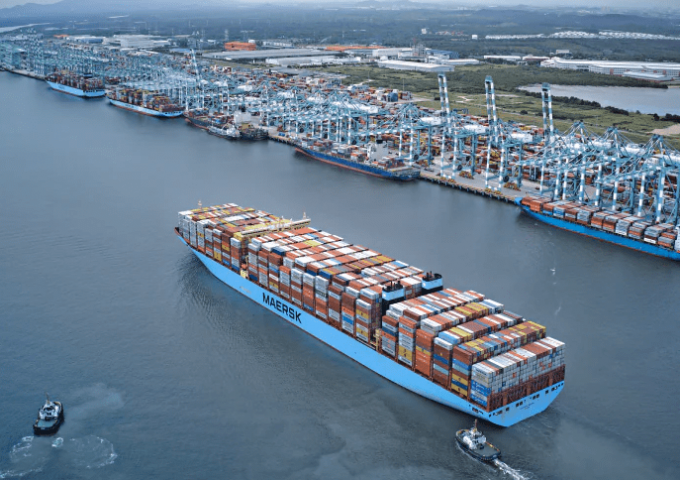Tighter EU import requirements proving 'a challenge' for forwarders
“Stricter Customs regulations” from the EU’s ICS2 will see “stricter enforcement”, Hapag-Lloyd has warned, and ...

After a “better-than-expected” first quarter, as it rounded out the half-year, Maersk today claimed it had maintained strong momentum, boasting volume growth and improved financials.
However, improved or not, against 2023, its H1 financials looked weak, with group revenue down 7% year on year, from $27.2bn to $25.1bn, and the Ebitda fall was even sharper, down 47.7%, to $3.7bn, as Ebit collapsed, down 71%, to $1.1bn.
But, with Maersk having warned that 2024 could be a ...
Asia-USEC shippers to lose 42% capacity in a surge of blanked sailings
USTR fees will lead to 'complete destabilisation' of container shipping alliances
Outlook for container shipping 'more uncertain now than at the onset of Covid'
New USTR port fees threaten shipping and global supply chains, says Cosco
Transpac container service closures mount
DHL Express suspends non-de minimis B2C parcels to US consumers
Zim ordered to pay Samsung $3.7m for 'wrongful' D&D charges
Flexport lawsuit an 'undifferentiated mass of gibberish', claims Freightmate
Cancelled voyages take the sting out of spot rate declines this week
Uncertainty over US tariffs sparks interest in bonded warehouses for imports
Shippers warned: don't under-value US exports to avoid tariffs – 'CBP will catch you'
Blanked sailings in response to falling demand 'just a stop-gap solution'


Comment on this article